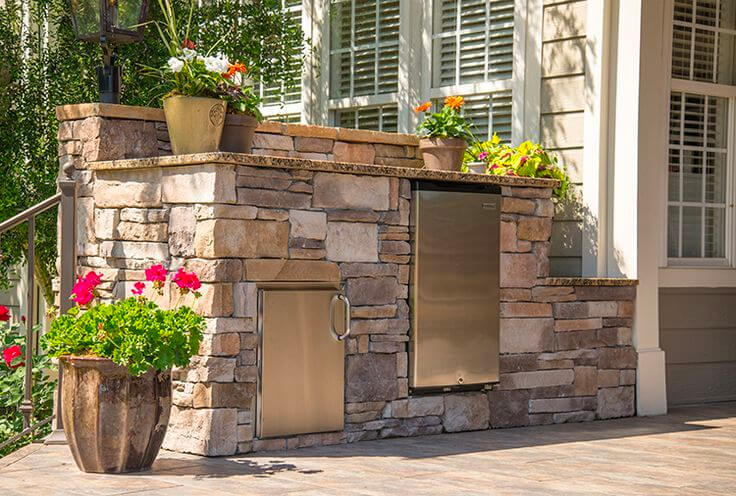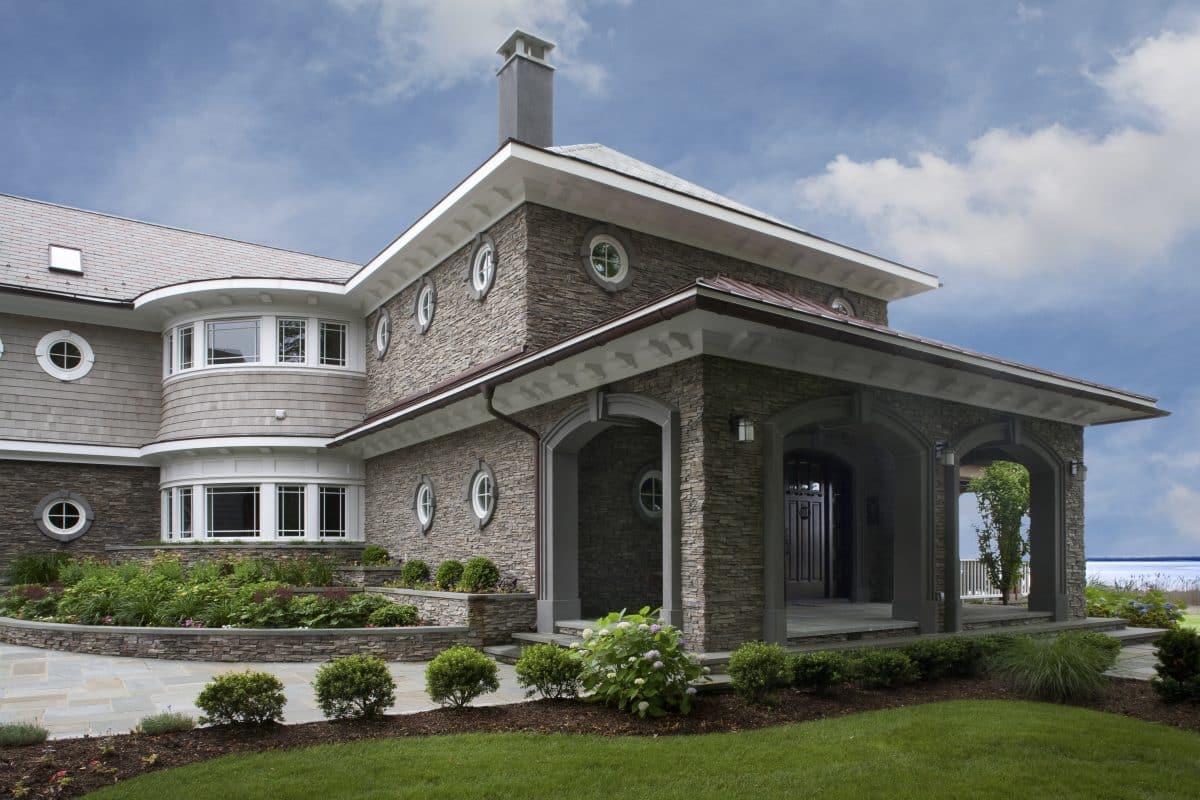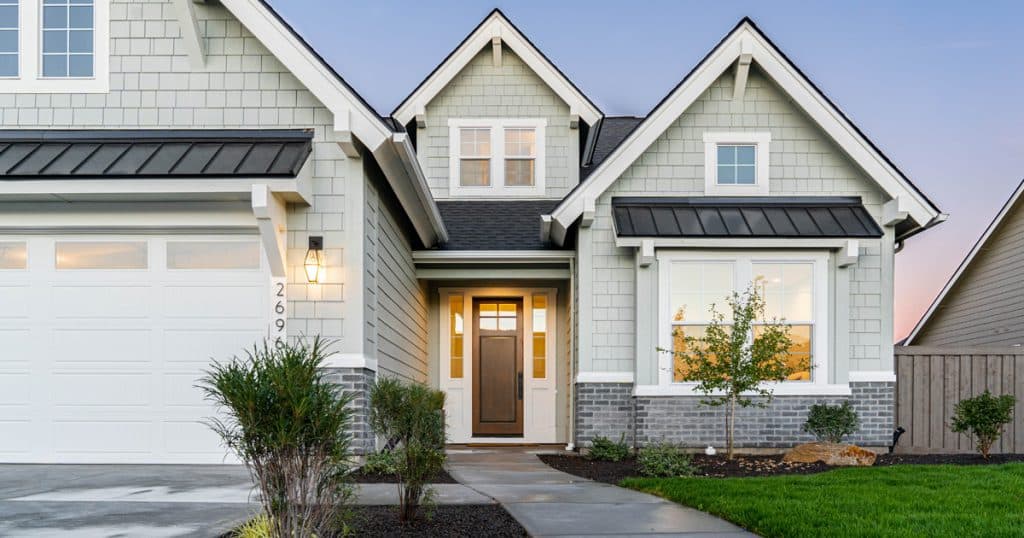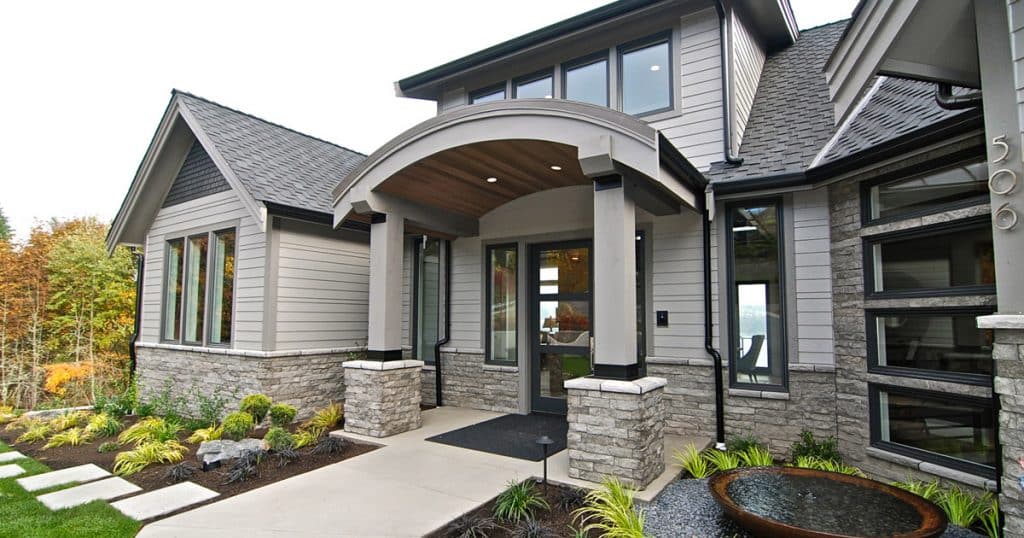
Top 5 Trends in Manufactured Stone Veneer and Thin Brick Design for 2025
As we move into 2025, the design world continues to evolve with new innovations in building materials. Manufactured stone veneer (MSV) and thin brick are leading the charge, offering both aesthetic appeal and durability for a variety of applications. These materials are highly sought after for their versatility, low maintenance, and wide range of styles, making them ideal for both residential and commercial projects. Whether you’re designing interior walls, exterior facades, or landscaping features, these materials are transforming the way we approach architecture.
Here’s a breakdown of the top five trends in manufactured stone veneer and thin brick applications, design, and innovation for 2025.

1. Sustainability: Eco-Friendly Materials and Green Building Practices
Sustainability is a major priority for both designers and homeowners in 2025. Manufactured stone veneer and thin brick are now being produced using eco-friendly materials and methods to reduce environmental impact.
Energy-Efficient Production: Advances in manufacturing techniques now make it possible to create thin brick and MSV products with less energy consumption and reduced waste, making them more sustainable than ever.
Recycled Materials in MSV and Thin Brick: Both manufactured stone veneer and thin brick manufacturers are increasing the use of recycled aggregates and materials such as post-consumer glass, recycled concrete, and natural stone dust. These sustainable building materials reduce the carbon footprint while maintaining the high-quality look and feel of traditional stone and brick.
Low-VOC and Non-Toxic Finishes: As the demand for healthier indoor environments grows, more MSV and thin brick options are being offered with low-VOC or VOC-free finishes. This makes them ideal for residential projects, particularly in areas like kitchens, bathrooms, and living rooms where air quality is essential.

2. Larger Formats and Customizable Options for Stone Veneer
In 2025, bigger is better when it comes to both manufactured stone veneer. There is a noticeable shift toward larger panels and customizable formats, particularly in modern and minimalist designs.
- Large Format Stone Veneer Panels: Large, seamless panels of manufactured stone veneer are becoming increasingly popular for creating dramatic feature walls, facades, and columns. These oversized panels require fewer joints, resulting in a clean, polished look with less maintenance.
- Custom Shapes and Patterns in Thin Brick: Designers are also experimenting with more intricate layouts using thin brick. Custom shapes, such as chevron, herringbone, and vertical stack patterns, are becoming popular for adding texture and visual interest. Thin brick’s flexibility allows for creative expression, enabling designers to integrate modern or rustic elements depending on the project.
- Modular Stone Veneer: Modular stone veneer systems are being developed to fit together seamlessly, allowing for customized looks and easy installation. Whether using larger panels or brick-sized pieces, these options provide flexibility without compromising design integrity.

3. Blended Colors and Mixed Textures: Creating Depth and Interest
A major design trend for both MSV and thin brick in 2025 is the blending of textures and colors to create depth and a layered aesthetic. These materials are becoming more versatile as designers explore new ways to combine different stone and brick finishes.
Textured Thin Brick in Modern Spaces: Thin brick is being used in new ways, especially in contemporary spaces where the focus is on subtle textures and natural finishes. By selecting bricks with a variety of surface textures—ranging from rough to smooth—designers can create feature walls that look sophisticated yet grounded in nature.
Mixed Textures in MSV and Thin Brick: One of the most exciting trends is the combination of different textures within a single installation. Whether pairing smooth, polished stone veneer with rough-hewn stone or contrasting matte and glossy finishes in thin brick, the juxtaposition of materials adds visual complexity and sophistication.
Gradient and Color Transitions: Color gradients and subtle transitions are trending for both MSV and thin brick. Designers are opting for materials that offer soft fades from light to dark, mimicking the natural aging process of stone and brick. Earthy tones, such as warm browns, greys, and terracotta reds, are increasingly popular as they evoke a timeless, organic feel.

4. Indoor-Outdoor Integration: Seamless Transitions with MSV and Thin Brick
The trend for seamless indoor-outdoor living continues to grow, and both manufactured stone veneer and thin brick are key materials in creating these fluid transitions between spaces.
Accent Walls and Feature Fireplaces: Thin brick is being used to create stunning accent walls, often paired with other materials like wood or metal for a contemporary design. MSV’s versatility makes it perfect for framing focal points like fireplaces, creating a striking visual element in both living rooms and outdoor settings.
Outdoor Living Spaces with MSV and Thin Brick: Outdoor kitchens, patios, and fire features are increasingly designed using manufactured stone veneer and thin brick to create visually cohesive spaces that blend with interior design. MSV’s durability against the elements and thin brick’s ability to integrate with various styles make them ideal choices for landscaping features like retaining walls, planters, and garden paths.
Indoor Walls and Exteriors: MSV and thin brick are being used to connect indoor and outdoor spaces with a uniform look. Many homeowners are using MSV on exterior facades, and then repeating similar patterns or textures inside to create a harmonious flow. This is particularly true for luxury residences, where the goal is to create a unified aesthetic across the entire property.

5. Handcrafted and Artisanal Designs: Personalized Finishes for MSV and Thin Brick
In 2025, the desire for bespoke, artisanal craftsmanship is influencing the design of both manufactured stone veneer and thin brick. Consumers are seeking more personalized options that offer a distinctive, high-end appeal.
Luxury Finishes with Enhanced Durability: In response to the demand for more durable and long-lasting materials, MSV and thin brick are now available with advanced surface treatments that improve their resistance to stains, scratches, and fading. These luxury finishes allow the materials to maintain their aesthetic appeal for years, even in high-traffic areas.osed to intense sunlight for extended periods.
Handcrafted Thin Brick: While thin brick has traditionally been machine-made, many manufacturers are offering handcrafted versions that provide unique texture and detail. These artisan-crafted bricks have slight variations in color and texture, making them ideal for creating custom-designed feature walls or pathways that feel both authentic and high-end.
Custom Stone Veneer Patterns: Custom-designed MSV is now a growing trend for both commercial and residential properties. Many builders are working with manufacturers to create one-of-a-kind textures and patterns that reflect the personality of the space. From ancient, weathered looks to sleek, modern finishes, MSV can be tailored to suit specific project needs.

Conclusion: The Future of Manufactured Stone Veneer and Thin Brick in 2025
The year 2025 promises to be an exciting time for both manufactured stone veneer and thin brick design, with advancements in sustainability, customization, and aesthetic innovation transforming the building materials industry. From eco-friendly production practices and larger, seamless panels to the blending of textures and colors for dynamic wall designs, these materials are offering endless possibilities for both commercial and residential projects.
As architects and designers seek to create unique, high-quality spaces, MSV and thin brick will continue to be the go-to choices for those looking to blend beauty with functionality. Whether used for exterior facades, interior accent walls, or landscaping features, these materials are shaping the future of modern architecture with timeless elegance and unmatched durability.
If you’re planning a project in 2025, embracing these trends will not only enhance the visual appeal of your space but also contribute to a more sustainable and lasting design solution.







































